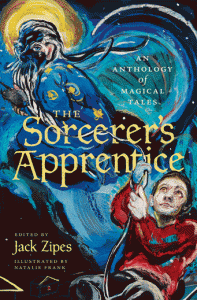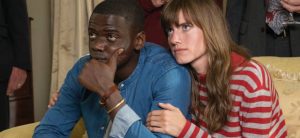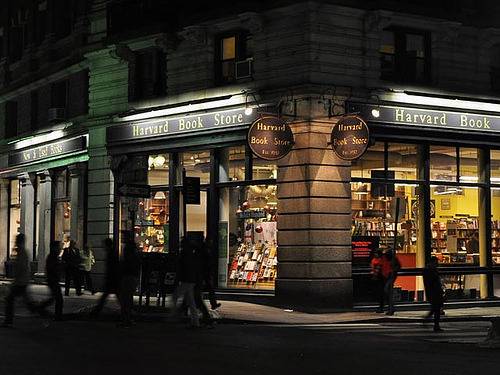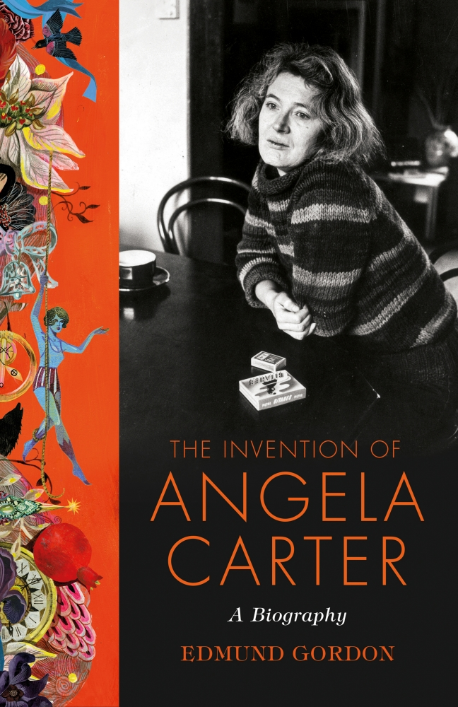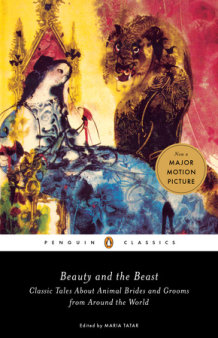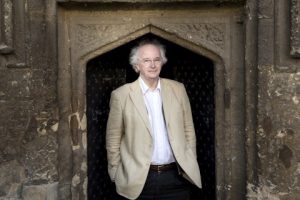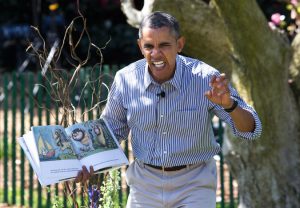It is not often that a new book comes along that is both a breakthrough in scholarly terms and also a magnificent work of art. Jack Zipes’s The Sorcerer’s Apprentice, illustrated by Natalie Frank, is both. Since Bruno Bettelheim’s The Uses of Enchantment, published in 1976, we have worried about the uses of enchantment, and also taken for granted that the high-profile figures in fairy tales are female. Who are the superstars? Little Red Riding Hood, Snow White, Cinderella, Rapunzel, Sleeping Beauty, and so on. Never mind Jack, Rumpelstiltskin, Hansel, and Prince Charming–the most memorable figures are girls and witches, stepmothers and princesses. And these figures all live in a world where magic happens–and no one is ever shocked, startled, or surprise. A high quotient of weirdness is part of what ensures that the stories never get old. Because the conflicts in them are primal and do not yield easily to a solution or resolution (contempt vs. compassion; predator vs. prey; innocence vs. seduction), we get caught up in an endless repetition compulsion with these stories, always making them new even as we never get the core problem at the heart of the tale right.
What Jack Zipes has done is to foreground a tale that has not received much scholarly attention and yet has been right in plain sight. Many of us grew up with Mickey Mouse as beleaguered apprentice in Fantasia but never thought to drill down deeper into the story. And even dedicated readers of the Harry Potter books are unlikely to have connected “The Sorcerer’s Apprentice” with Dumbledore and Harry, but presto! there it is. Zipes writes: “In short the structure of Rowling’s fairy tale resembles the folklore tale type ATU 325, which has the following plot functions: (1) a poor father apprentices his son to a magician/sorcerer to study magic for one or three years at a mysterious place/school. (2) The son secretly flies home and indicates to his father/mother how he or she can recognize him, or the father and mother are helped by a mysterious stranger who advises them on how to recognize their son. (3) Once liberated, the son, who has learned and gained just as much knowledge of magic as his master, can shape-shift . . . (4) The magician seeks revenge . . . (5) The magician imprisons the pupil . . . (6) The pupil uses his cunning and knowledge of magic to escape and the magician pursues him . . . ” I’ve left out a good deal, but there’s enough there to reveal the degree to which tropes from “The Sorcerer’s Apprentice” flash out for us repeatedly in the Harry Potter books. Rowling’s series still seems more fantasy literature (with its multiple portals to Hogwarts and the magic world) than fairy tale, but it is astonishing how fantasy fiction creatively repurposes “The Sorcerer’s Apprentice,” along with a host of other intertexts, to be sure.
The great accomplishment of Zipes’s anthology is to draw attention to the importance of magic in fairy tales and to identify a subset of fairy tales that feature a father-son type relationship that goes wrong (a nice way to balance out all the stories about mothers and daughters). And there is something wonderfully meta about a fairy tale in which the power struggle turns on magic and how to wield it and control it.
Zipes gathers together more than fifty variants of the tale type, from classical times up to the present, with what comes to feel like “endless forms most beautiful and most wonderful.” He shows how the tale bifurcates, taking two different pathways, with “humiliated apprentices” who are defeated by magic and yield to authority and “rebellious apprentices” who learn how to control their powers and wield them skillfully and responsibly. There is much to ponder in this book, and, the stories show a fascinating range and play of possibilities.
